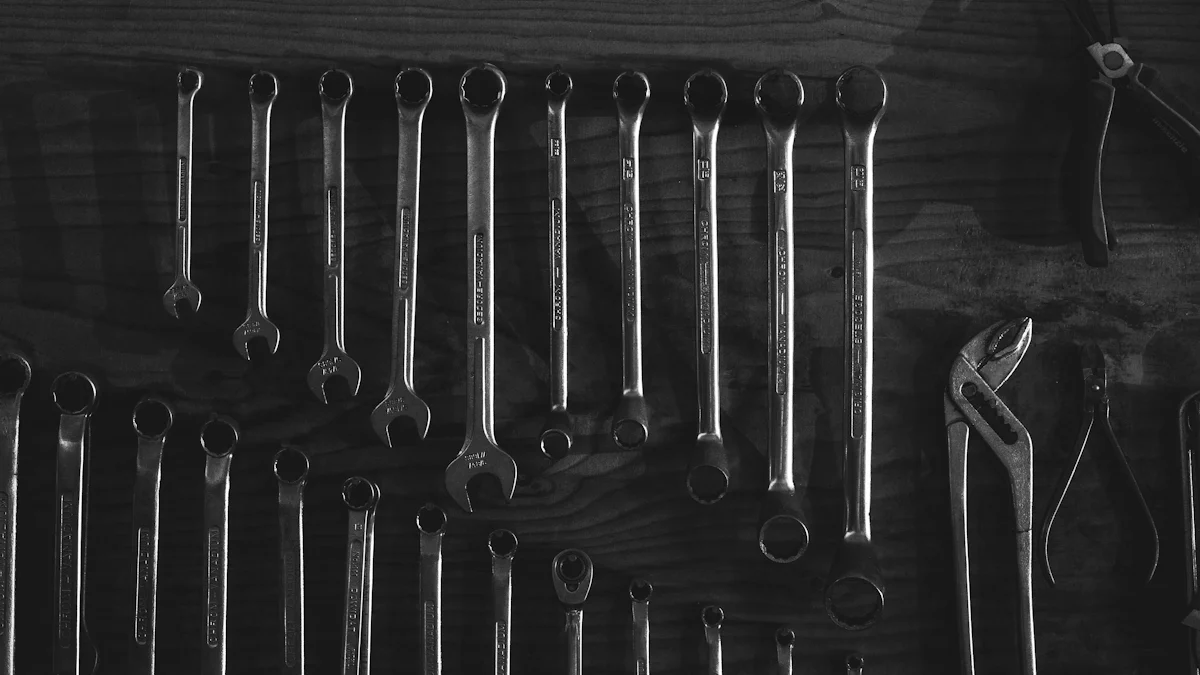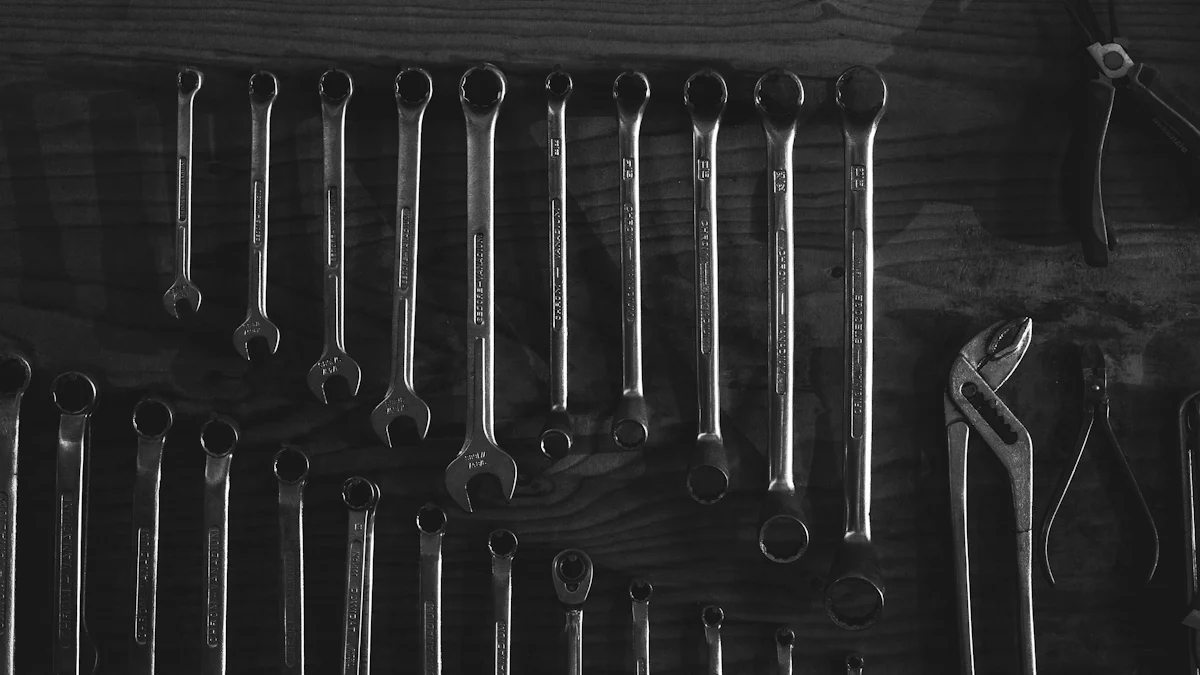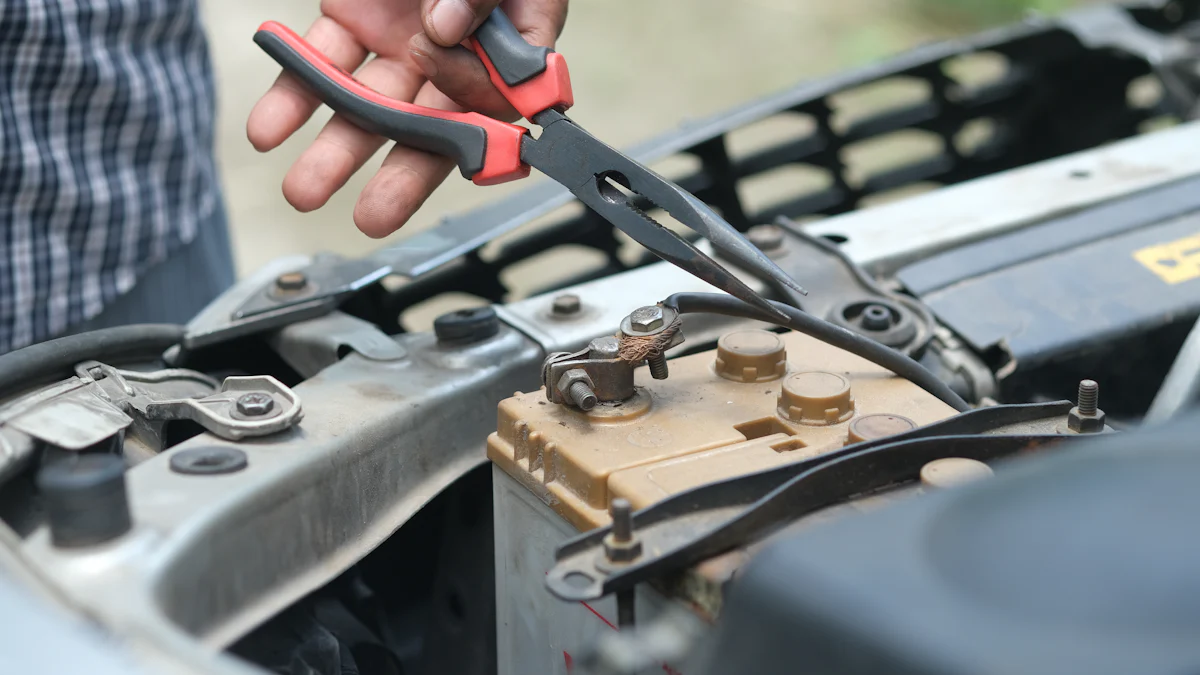
Using the correct spanner size for your car battery is crucial. Proper fit ensures safety and efficiency during maintenance tasks. Using the wrong size can lead to slippage, causing potential injuries or damage. According to a study by the Department of Labor and Industry, Pennsylvania, more than 8% of workplace injuries involve incorrect hand tool use. Always prioritize safety by choosing the right tools. This practice reduces risks and enhances the longevity of your car battery. When determining what size spanner for car battery, consult your car’s owner manual or use a digital caliper to measure the nuts’ diameter. If your car has 10mm battery terminal nuts, you will need a 10mm wrench. Visually inspect the battery terminals to identify the size and select the appropriate size wrench from your toolkit. Most battery terminals come with either 10mm or 12mm socket sizes. When choosing a wrench for car batteries, consider the size of the battery terminals and match the wrench size accordingly. The final torque is an important factor when selecting a battery torque wrench. It is recommended to use a 10mm wrench for most battery-cable clamps. In some cases, an adjustable open-end wrench can be used for disconnecting car battery cables. Having a socket-wrench set with a 10mm socket can be helpful for working on car batteries.
Understanding Spanner Sizes

Metric vs. Imperial Sizes
Differences between metric and imperial spanners
Metric and imperial spanners differ in measurement units. Metric spanners measure in millimeters (mm). Imperial spanners measure in inches. This difference affects the fit on nuts and bolts. For example, a 10mm spanner will not fit a 3/8 inch bolt properly. Using the wrong type can cause slippage and damage.
Common sizes used in automotive work
Automotive work often requires specific spanner sizes. Common metric sizes include 8mm, 10mm, and 12mm. Common imperial sizes include 3/8 inch, 7/16 inch, and 1/2 inch. These sizes fit most car battery terminals and other automotive components. Always keep a set of both types in your toolkit.
How Spanner Sizes are Measured
Explanation of measurement standards
Spanner sizes follow specific measurement standards. Metric spanners measure the distance across the flats of the nut or bolt. Imperial spanners use the same method but in inches. Accurate measurements ensure a proper fit. A poorly fitting spanner can cause rounding off the edges of nuts and bolts.
Tools for measuring spanner sizes
Use tools to measure spanner sizes accurately. A digital caliper provides precise measurements. Place the caliper across the flats of the nut or bolt. Read the measurement on the display. Another option is a spanner size conversion chart. This chart helps convert between metric and imperial sizes. Keep these tools handy for quick reference.
By understanding these differences and measurement methods, you can choose the right spanner size for your car battery. Proper tool selection ensures safety and efficiency during maintenance tasks.
Identifying the Correct Spanner Size for Your Car Battery

Checking Your Car Battery Specifications
Locating the battery specifications
To identify the correct spanner size for your car battery, start by locating the battery specifications. These details are usually found in the car’s owner manual. The manual provides essential information about the battery, including terminal sizes and types. If the manual is unavailable, check the battery itself. Most batteries have labels or markings that indicate the terminal specifications.
Understanding terminal types and sizes
Understanding the types and sizes of battery terminals is crucial. Car batteries typically have either top-post or side-post terminals. Top-post terminals are more common and feature cylindrical posts. Side-post terminals have threaded bolts on the side of the battery. Each type requires different spanner sizes. For example, top-post terminals often use 10mm or 12mm nuts. Side-post terminals may require a different size. Knowing the terminal type helps in selecting the appropriate spanner.
Matching Spanner Size to Battery Terminals
Common spanner sizes for battery terminals
Common spanner sizes for car battery terminals include 10mm and 12mm. These sizes fit most battery terminal nuts. A 10mm spanner is often used for battery-cable clamps. Some cars may require a 13mm spanner. Always verify the size by measuring the terminal nuts. Use a digital caliper for precise measurements. This tool ensures you select the correct spanner size.
Tips for ensuring a proper fit
Ensuring a proper fit involves several steps:
- Measure the terminal nuts: Use a digital caliper to measure the diameter of the terminal nuts. Accurate measurements prevent slippage and damage.
- Select the right spanner: Choose a spanner that matches the measured size. A proper fit ensures efficient and safe maintenance.
- Check the fit before use: Place the spanner on the terminal nut to check the fit. The spanner should fit snugly without excessive play.
- Avoid over-tightening: Over-tightening can damage the terminal or the spanner. Apply moderate force to secure the connection.
By following these steps, you can determine what size spanner for car battery maintenance tasks. Proper tool selection enhances safety and efficiency. Regularly inspect and clean the battery terminals to maintain optimal performance.
Practical Tips for Using Spanners Safely
Safety Precautions
Wearing protective gear
Always wear protective gear when working with spanners. Gloves protect your hands from cuts and abrasions. Safety glasses shield your eyes from debris. A study by the Department of Labor and Industry, Pennsylvania, revealed that 8% of workplace injuries involve incorrect hand tool use. Proper gear reduces the risk of injury.
Ensuring the car is off and secure
Ensure the car is off and secure before using a spanner. Disconnect the battery to prevent electrical shocks. Engage the parking brake to keep the car stationary. Use wheel chocks to prevent rolling. These steps create a safe working environment.
Proper Technique for Using Spanners
Avoiding over-tightening or under-tightening
Avoid over-tightening or under-tightening nuts and bolts. Over-tightening can strip threads and damage components. Under-tightening can lead to loose connections. Use a torque wrench to apply the correct amount of force. Follow the manufacturer’s specifications for torque settings.
Handling and storing spanners correctly
Handle and store spanners correctly to maintain their condition. Clean spanners after each use to remove dirt and grease. Store spanners in a dry place to prevent rust. Organize spanners by size in a toolbox or on a pegboard. Proper care extends the lifespan of your tools.
By following these practical tips, you ensure safe and efficient use of spanners. Proper technique and safety precautions prevent injuries and maintain the quality of your work.
Choosing the right spanner size for your car battery is essential. Proper fit ensures safety and efficiency during maintenance. Follow these key steps:
- Measure the terminal nuts with a digital caliper.
- Select a spanner that matches the measured size.
- Check the fit before use to avoid slippage.
Always prioritize safety. Use protective gear and ensure the car is off and secure. Proper tool use enhances the longevity of your car battery and reduces risks.
See Also
Scooter Upgrades: High-Quality Parts for Maximum Performance
Men and Women’s Sock Selection: Diverse Options to Explore
